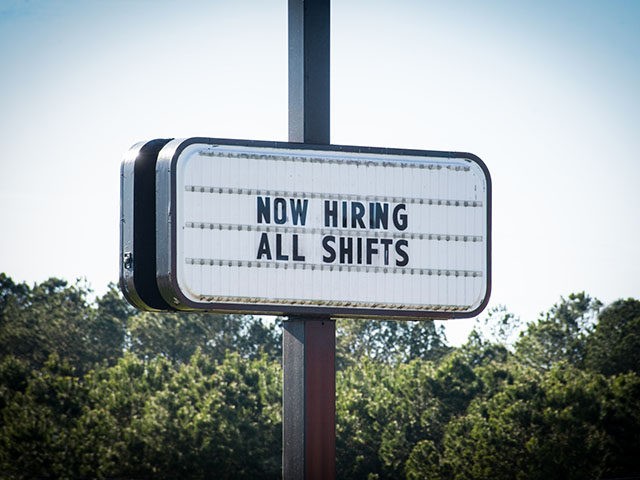Private sector hiring slowed in August—if you can believe the revamped report from the payroll processing company ADP.
The ADP report on private payrolls had long been looked to as a preview of the official jobs figures from the Labor Department typically released a few days later. The two reports had fallen badly out of sync as the economy fluctuated wildly during the pandemic, however, and ADP suspended its report for a few months this summer while it reworked how it counts jobs.
The new report is compared by the ADP Research Institute in collaboration with Stanford Digital Economy Lab. It no longer attempts to anticipate the government report and is described by the company as an “independent” look at the labor market. It makes more use of the proprietary data ADP gleans from servicing firms with an aggregate of 25 million workers on payrolls.
The first report using the revised methodology was released Wednesday. It says that businesses’ payrolls rose 132,000 this month, which ADP says is the smallest gain since the start of 2021 under the new methodology. ADP says it saw a 270,000 increase in July—a stark contrast with the Labor Department’s estimate of 490,000.
This was far below the forecast of analysts for 300,000 jobs in the ADP report. That estimate, however, matches the estimate for private payrolls in the Labor Department report due out Friday and may not have fully reflected the changes in the ADP methodology.
“Our data suggest a shift toward a more conservative pace of hiring, possibly as companies try to decipher the economy’s conflicting signals,” Nela Richardson, chief economist at ADP, said in a statement. “We could be at an inflection point, from super-charged job gains to something more normal.”
The ADP report showed 2,000 new mining jobs and 21,000 construction jobs. Manufacturing payrolls were flat for the month, which is consistent with weakness seen in manufacturing from both the regional Fed banks’ surveys and the purchasing managers index surveys.
Trade, transportation, and utilities rose by 54,000, ADP said. Leisure and hospitality was up 96,000. “Other services” gained 10,000. There were significant declines in finance, business, and health/education services. Information technology shrank by 1,000 jobs.
This amounts to a relatively sluggish pace of hiring, especially compared with the first seven months of this year, when nonfarm payrolls have been increasing by an average of over 471,000, according to Labor Department data. The hiring seen in ADP is also very low compared with the government’s estimate of 11.239 million openings at the end of August, suggesting that employers either failed to fill many of those positions or pulled back from hiring.
The report also contains a lot of wage data not seen in the old ADP reports. It shows that workers who changed jobs experienced a 16.1 percent pay increase from August 2021. Those who stuck with the same job saw just a 7.6 percent increase.
Workers in leisure and hospitality along with trade, transportation and utilities posted the strongest annual pay growth. The wages of women grew faster than men. Wages of workers at bigger companies saw more wage growth than workers at smaller companies with fewer than 20 employees, at 8.3 percent to 5.4 percent respectively.
Younger workers have seen much bigger relative gains than older workers. Those aged 16 to 24 have seen average wages jump 14.5 percent compared with last August. Twenty-five to 34-year-olds have seen wages rise 11 percent. Thirty-five to 54-year-olds have seen a 7.4 percent raise. Older workers have received just a 5.4 percent raise.

COMMENTS
Please let us know if you're having issues with commenting.